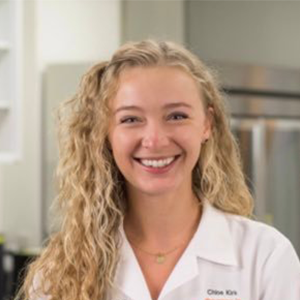Huntington’s disease: a rare cousin of Alzheimer’s
Many of us have heard of the neurological disorder Alzheimer’s disease, which affects 1 in 9 over the age of 65. But fewer are familiar with a rarer form of dementia called Huntington’s disease which affects just 5.7 of every 100,000 people.
May is Huntington’s Disease Awareness Month, so let’s dive in a bit on what this disease is and where we are in treating it.
Discovery and diagnosis of Huntington’s
Huntington’s is an inherited neurological disorder that breaks down nerve cells involved in voluntary movement. The disease was first characterized by George Huntington in his 1872 paper detailing patients’ loss of motor control, jerky movements, personality changes, and cognitive decline. Huntington documented a hereditary pattern for the disease, but it wasn’t until 1983 when the Huntington gene (HTT) was molecular mapped to a human chromosome.
Gene regulation
HTT regulates neuronal and glial function in the brain, but an abnormal expansion of glutamine (polyQ) leads to Huntington’s. These abnormal HTT proteins form glue-y plaques in the brain — clumps of the protein with a specific Beta-sheet fold and difficult-to-dissolve (insoluble) structure.
Treating the plaques
Amyloid plaques are a characteristic among many neurological diseases (i.e. alpha-synuclein in Parkinson’s, amyloid-beta in Alzheimer’s). These diseases are difficult to treat due to their rigid and insoluble nature and the lack of tools able to disassemble these plaques in cells.
Current treatments of Huntington’s disease focus on limiting involuntary movements, but unfortunately this is preventative management and not a cure.
Recent drug approval for Alzheimer’s targets the amyloid plaque related to the disease, beta-amyloid, and many think similar approaches can be used for other amyloid plaque based diseases including Huntington’s.

Related stories
Huntingtin through a multiomic lens: A study shows that the mutant protein that causes Huntington’s disease can alter the binding properties of another protein, perhaps accounting for some of the mutation’s far-flung cellular effects.
A very delicate balance: Could blocking lysosomal gatekeeper PIKfyve slow neurodegeneration?
A family history of Alzheimer’s sparks interest in basic research: JBC Herbert Tabor Early Career Investigator Award winner Jenna Lentini shares her work at Discover BMB.
Overcoming missed connections to battle Alzheimer’s: Researchers identify a protein that may allow some people to resist dementia despite plaque accumulation.
Reimagining drugs for rare brain disorder: Researchers develop new pipeline to screen large number of existing compounds to find a therapy for an ataxia.
Neurodegenerative disease linked to microtubules: A team at McGill University reports a new role for sacsin, the protein mutated in a rare hereditary ataxia.
Enjoy reading ASBMB Today?
Become a member to receive the print edition four times a year and the digital edition monthly.
Learn moreGet the latest from ASBMB Today
Enter your email address, and we’ll send you a weekly email with recent articles, interviews and more.
Latest in Science
Science highlights or most popular articles

The science of staying strong
Muscles power every movement, but they also tell the story of aging itself. Scientists are uncovering how strength fades, why some species resist it and what lifestyle and molecular clues could help preserve muscle health for life.

Bacteriophage protein could make queso fresco safer
Researchers characterized the structure and function of PlyP100, a bacteriophage protein that shows promise as a food-safe antimicrobial for preventing Listeria monocytogenes growth in fresh cheeses.

Building the blueprint to block HIV
Wesley Sundquist will present his work on the HIV capsid and revolutionary drug, Lenacapavir, at the ASBMB Annual Meeting, March 7–10, in Maryland.

Gut microbes hijack cancer pathway in high-fat diets
Researchers at the Feinstein Institutes for Medical Research found that a high-fat diet increases ammonia-producing bacteria in the gut microbiome of mice, which in turn disrupts TGF-β signaling and promotes colorectal cancer.

Mapping fentanyl’s cellular footprint
Using a new imaging method, researchers at State University of New York at Buffalo traced fentanyl’s effects inside brain immune cells, revealing how the drug alters lipid droplets, pointing to new paths for addiction diagnostics.

Designing life’s building blocks with AI
Tanja Kortemme, a professor at the University of California, San Francisco, will discuss her research using computational biology to engineer proteins at the 2026 ASBMB Annual Meeting.

